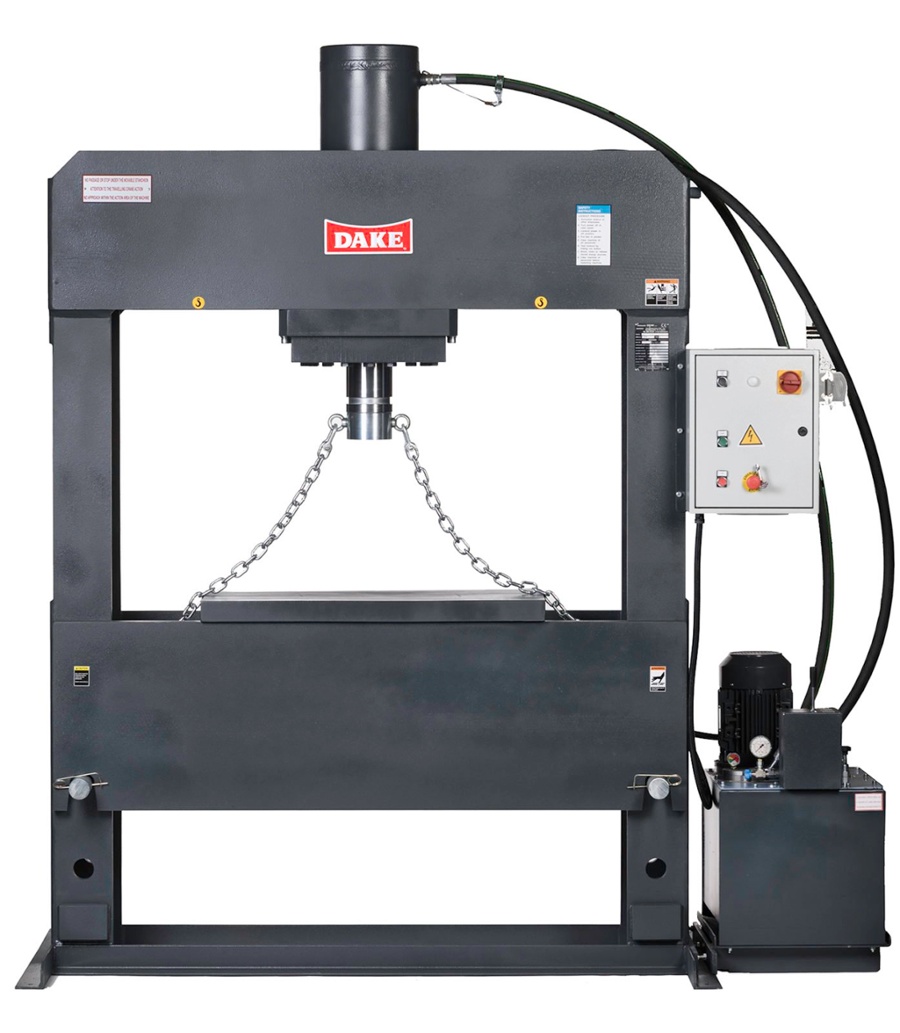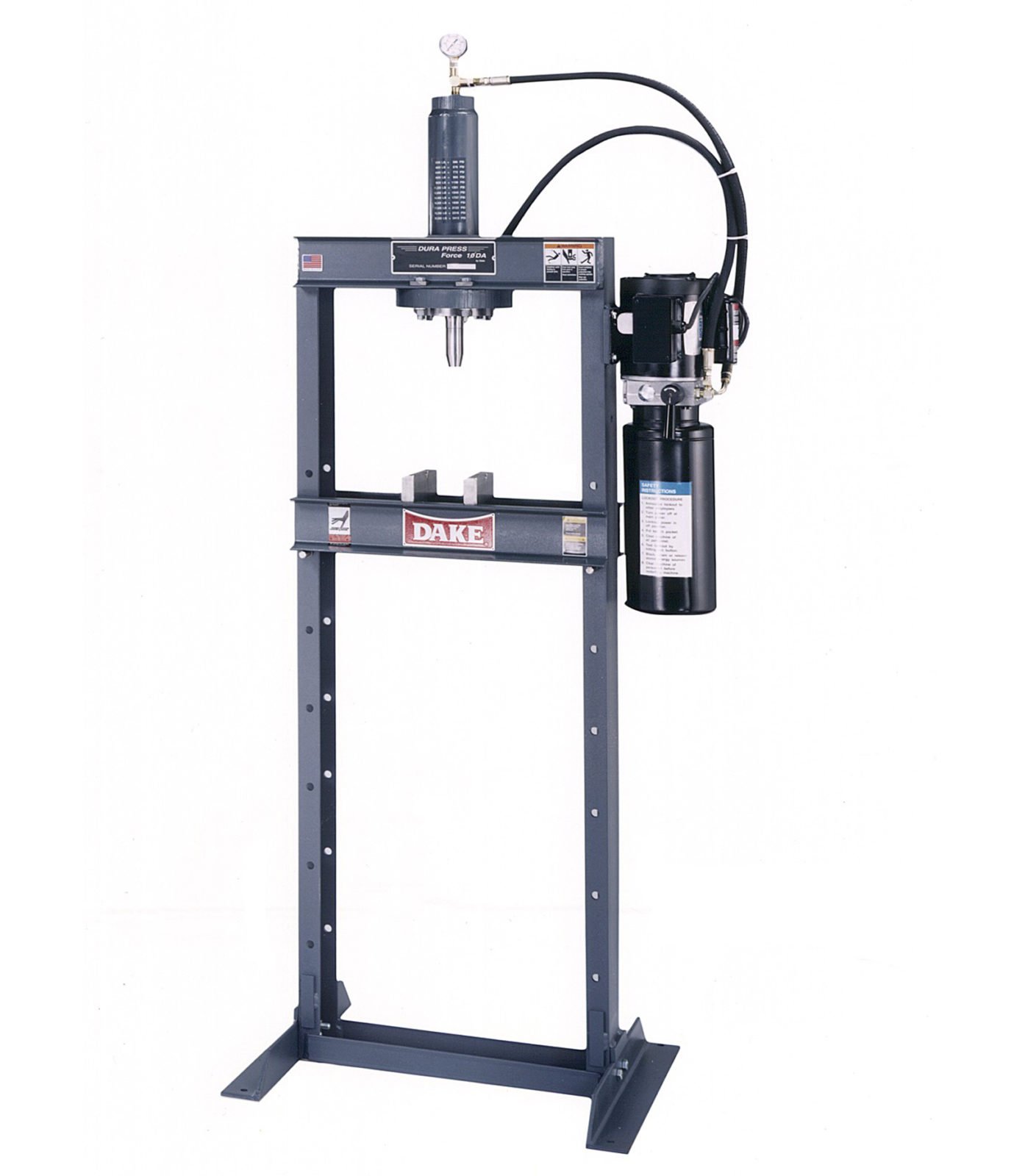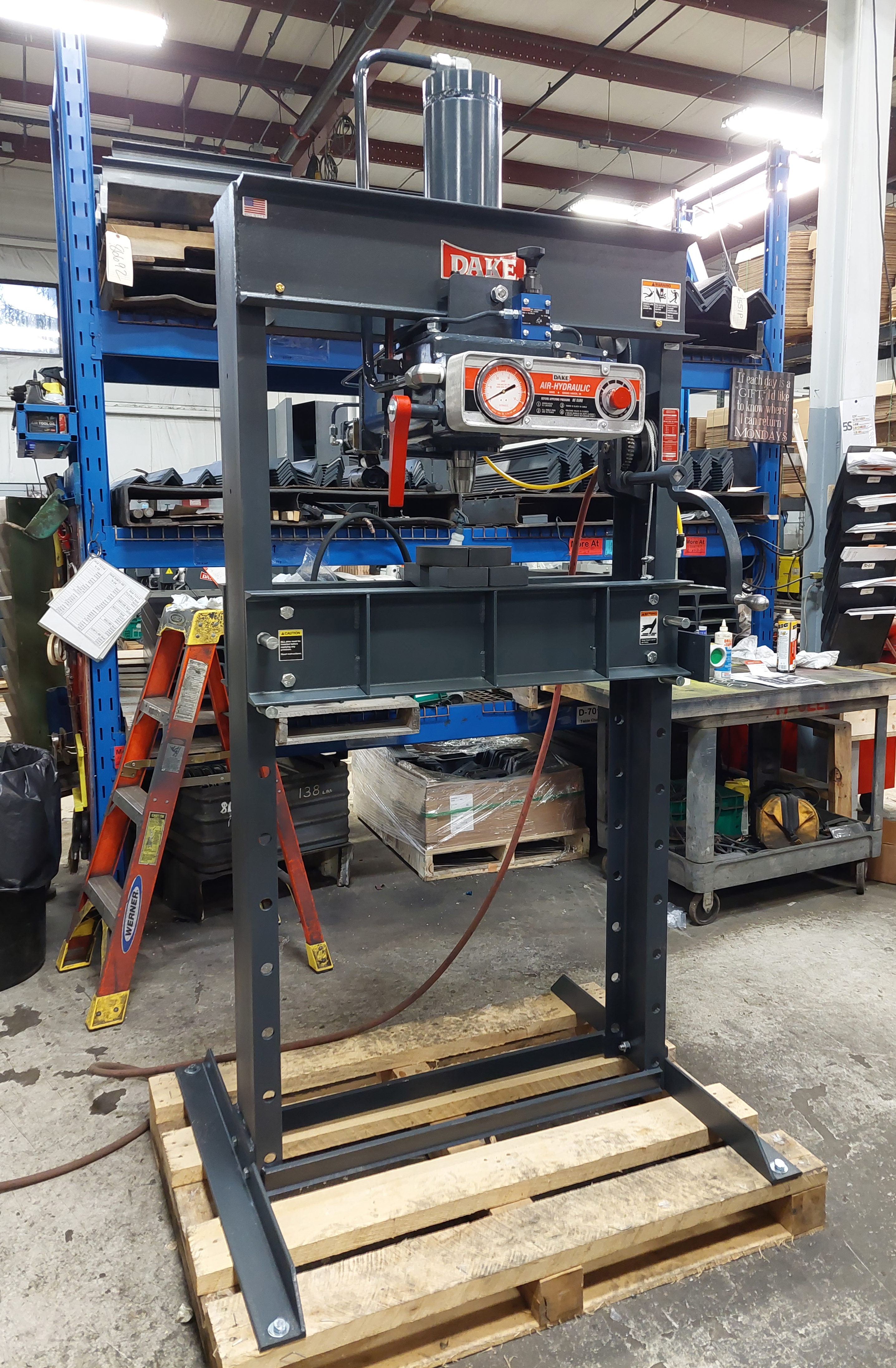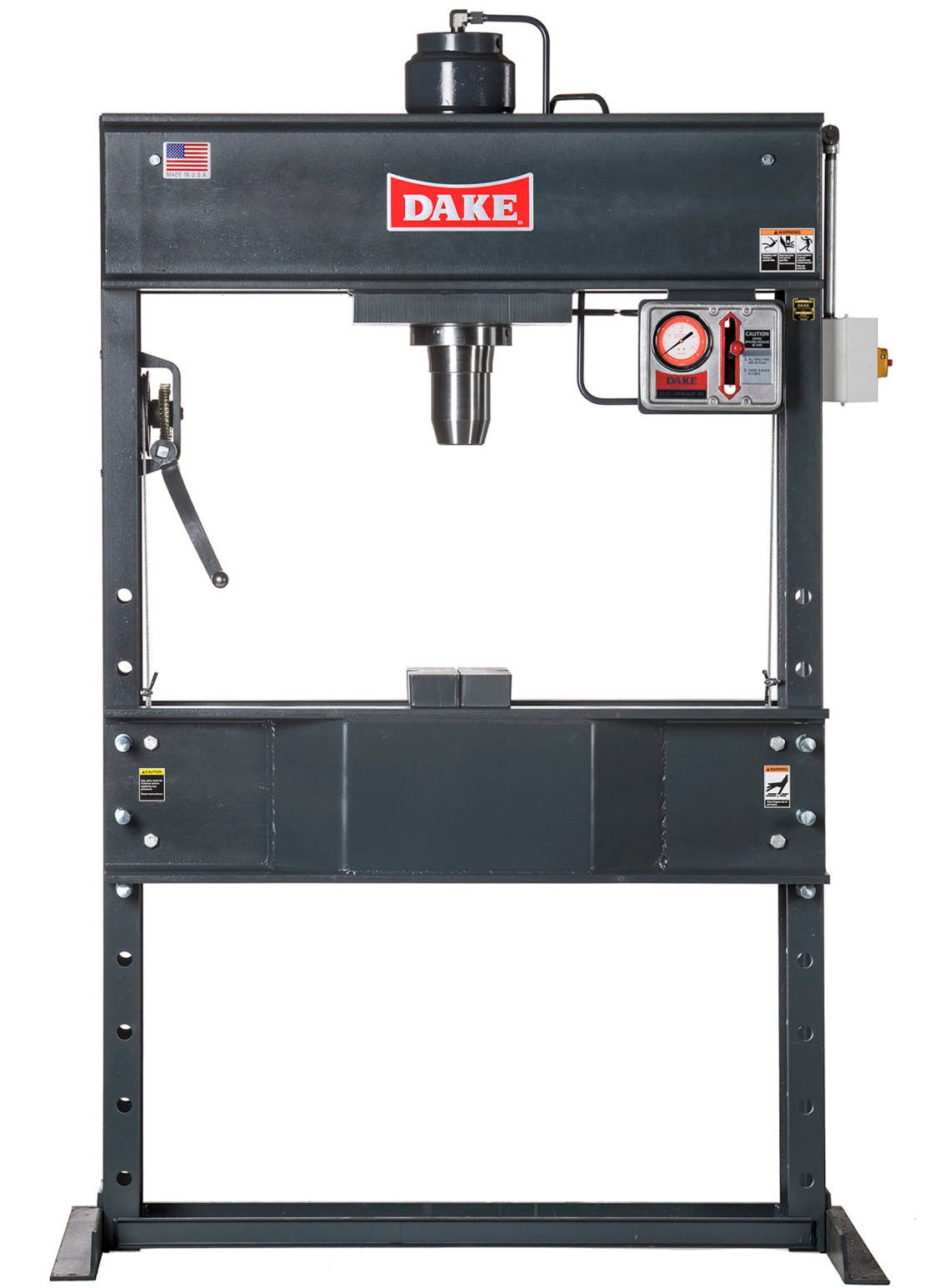Dake offers nine different types of hydraulic presses for all of your metalworking needs. With so many categories to choose from, it might seem a bit difficult to choose which hydraulic press is right for your metalworking shop.
That’s why we created this handy guide to help you select the right fit.
Before you start any project, it’s important to remember safety first rules especially when you are running metalworking equipment.
Even if you are familiar with the rules, refresh your memory by going to the Occupational Safety and Health Administration (OSHA) and/or read the tips on the Machine Accidents website which outlines a list of do’s and don’ts to reduce the risk of metalworking accidents.
Hydraulic Press Categories
We have manufacturing hydraulic presses since the mid-1940’s. With plenty of time to perfect the machines, we offer presses that are built to withstand the test of time.
Each one is constructed out of a heavy-duty arc-welded steel frame and uses seamless steel cylinders to prevent any leakage.
You can use hydraulic presses for a variety of tasks including straightening, fabrication, product testing, bending, forming, punching, shearing, and so much more.
Here are the hydraulic press categories that you can choose from:
• Hand Operated Presses
• Air Operated Presses
• Elec-Draulic I Presses
• Elec-Draulic II Presses
• Moveable Table Presses
• Utility Hydraulic Presses
• Manual Dura-Presses
• Single Phase Dura-Presses
• Three Phase Dura-Presses
Each category houses specific models that can be used for various projects. Since there are so many different models, we will focus on the most popular ones in this post.
Single Phase Dura-Press: Force 50DA
Offering up to 50 tons of pressing power, the Force 50 DA Single Phase Dura-Press uses a 110-volt motor to achieve your metalworking goals.
It comes standard with a safety release valve, pressure gauge, lifting chain, and two combination table plate/V-blocks. The lever control arm makes it very user-friendly and easy to operate.
This machine uses low-pressure hydraulic components to deliver quiet, efficient, and smooth pressing.
Hand Operated Press: 50H
The traditional design of the Hand Operated 50H Press has been around since the 1920’s, and our experts here at Dake started manufacturing them in the 1940’s.
In fact, we still make the parts for the vintage machine to this day. Offering 50 tons of pressing power, this particular model comes standard with two steel V-blocks, a flat ram nose. a pressure gauge, a word head, two steel table plates, and a self-locking table hoist.
Standing 85 inches tall, the 50H model provides 7 ¼ inches of space between the table channels, and it also has a 20-¾ inch horizontal work head travel.
Air Operated Press: 6-900
Offering 200 tons of air-operated pressing power, the 6-900 model is one of the most powerful presses that we offer.
This machine comes standard with two V-blocks, a flat ram nose, a stroke indicator, a safety relief valve, a work head, two steel table plates, and a pressure gauge.
With the handy air-operated press, there is no need to hand pump. In fact, this particular machine features a double pump for faster action.
You can save yourself a lot of time using this capable press. It’s got a bypass hole that prevents excessive ram extension, and the table is adjustable for easy vertical movements.
Utility Press: B-10
By far one of our most popular hydraulic presses is the Utility B-10 model. Offering 10 tons of pressing power, this one is ideal for smaller metalworking shops.
It comes standard with a flat ram nose, a combination of table plates/V-blocks, and a step reduced ram nose. It’s fast and efficient, and it can accommodate a lot of different projects.
Check out this post to learn more about the Utility B-10 Hydraulic Press.
How to Pack and Seat Ball Valves on a Dake Hand Pump
If you are wondering how you can pack and seat ball valves inside a hand-operated press, our experts here at Dake are here to help.
Step #1 - Drop the ball into the pump plunger opening.
Step #2 - Seat the ball with the drift rod and a mallet.
Step #3 - Mount the pump plunger leather on the pump plunger shaft by screwing it into place.
Step #4 - Lubricate the shaft with oil, and place it inside the pump.
Sep #5 - Then place 7 leather pump packing washers on the shaft and secure them into position.
Step #6 - Drop the ball into the check valve hole, and seat it with a drift rod.
Step #7 - Next, drop a spring into the check valve hole, and tighten the pipe plug.
Step #8 - Drop another ball into the release valve hole, and seat it with a drift rod.
Step #9 - Insert the release valve rod, and secure it in place with a wrench.
Step #10 - Place another 7 leather pump packing washers on the shaft and secure them into position.
Step 11 - Lastly, tighten the nut with a wrench.
To see this process in a step-by-step video, click here.
How to Adjust Air Plunger Unit on the Dake Air Operated Press
If you need to adjust the air plunger on any of the Dake air operated press machine, you can follow these simple instructions:
Step #1 - Remove the air plunger armature, and take the plunger and spring out of the piston.
Step #2 - Crush the spring with a pair of pliers.
Step #3 - Dropped the crushed spring back into the piston cylinder.
Step #4 - Put the plunger back into the piston cylinder.
Step #5 - Reattached the armature in its new position. It should sit on top of the plunger.
Step #6 - Test it out by pulling down on the armature to apply pressure.
If you prefer to watch a video on how to adjust the air plunger on your air operated press, click here.
Customization with Dake
We have been manufacturing metalworking machines since 1887. With 133 years of experience under our belts, we’ve gotten quite good at it. If you are in need of a custom metalworking machine for your shop, get in touch with our representative today.
-1.jpg?width=1200&height=525&name=DAKE003_%20Logos_Red%20(002)-1.jpg)



